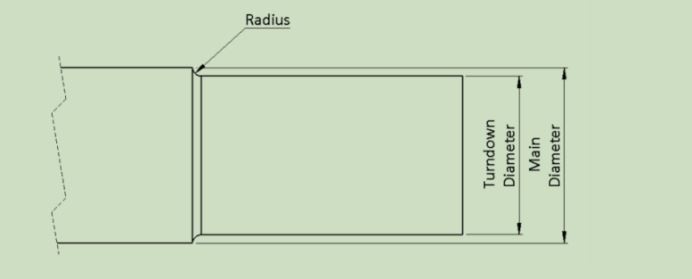 Afrikaans
Afrikaans  Albanian
Albanian  Amharic
Amharic  Arabic
Arabic  Armenian
Armenian  Azerbaijani
Azerbaijani  Basque
Basque  Belarusian
Belarusian  Bengali
Bengali  Bosnian
Bosnian  Bulgarian
Bulgarian  Catalan
Catalan  Cebuano
Cebuano  Corsican
Corsican  Croatian
Croatian  Czech
Czech  Danish
Danish  Dutch
Dutch  English
English  Esperanto
Esperanto  Estonian
Estonian  Finnish
Finnish  French
French  Frisian
Frisian  Galician
Galician  Georgian
Georgian  German
German  Greek
Greek  Gujarati
Gujarati  Haitian Creole
Haitian Creole  hausa
hausa  hawaiian
hawaiian  Hebrew
Hebrew  Hindi
Hindi  Miao
Miao  Hungarian
Hungarian  Icelandic
Icelandic  igbo
igbo  Indonesian
Indonesian  irish
irish  Italian
Italian  Japanese
Japanese  Javanese
Javanese  Kannada
Kannada  kazakh
kazakh  Khmer
Khmer  Rwandese
Rwandese  Korean
Korean  Kurdish
Kurdish  Kyrgyz
Kyrgyz  Lao
Lao  Latin
Latin  Latvian
Latvian  Lithuanian
Lithuanian  Luxembourgish
Luxembourgish  Macedonian
Macedonian  Malgashi
Malgashi  Malay
Malay  Malayalam
Malayalam  Maltese
Maltese  Maori
Maori  Marathi
Marathi  Mongolian
Mongolian  Myanmar
Myanmar  Nepali
Nepali  Norwegian
Norwegian  Norwegian
Norwegian  Occitan
Occitan  Pashto
Pashto  Persian
Persian  Polish
Polish  Portuguese
Portuguese  Punjabi
Punjabi  Romanian
Romanian  Russian
Russian  Samoan
Samoan  Scottish Gaelic
Scottish Gaelic  Serbian
Serbian  Sesotho
Sesotho  Shona
Shona  Sindhi
Sindhi  Sinhala
Sinhala  Slovak
Slovak  Slovenian
Slovenian  Somali
Somali  Spanish
Spanish  Sundanese
Sundanese  Swahili
Swahili  Swedish
Swedish  Tagalog
Tagalog  Tajik
Tajik  Tamil
Tamil  Tatar
Tatar  Telugu
Telugu  Thai
Thai  Turkish
Turkish  Turkmen
Turkmen  Ukrainian
Ukrainian  Urdu
Urdu  Uighur
Uighur  Uzbek
Uzbek  Vietnamese
Vietnamese  Welsh
Welsh  Bantu
Bantu  Yiddish
Yiddish  Yoruba
Yoruba  Zulu
Zulu Understanding the Role of Pulleys in Conveyor Belt Systems and Their Importance
Understanding Conveyor Belt Pulleys A Crucial Component in Material Handling
Conveyor belts have become an integral part of numerous industries, enabling the efficient transportation of goods and materials over varying distances. A conveyor belt system is often made up of various components, each playing a vital role in ensuring smooth operation. Among these components, pulleys stand out as crucial elements that facilitate the functioning of the entire system. This article delves into the significance of conveyor belt pulleys, their types, functions, and maintenance.
What are Conveyor Belt Pulleys?
Pulleys are mechanical devices consisting of a wheel on an axle or shaft that is designed to support movement and change the direction of force. In the context of conveyor belts, pulleys are used to drive the belt and are responsible for optimizing the movement of materials across the system. They can be found at various points along the conveyor line, including the head, tail, and intermediate locations.
Types of Conveyor Belt Pulleys
1. Head Pulleys Located at the discharge end of the conveyor, head pulleys are crucial for driving the belt. They are typically powered by a motor and are designed to provide the necessary traction to move the belt and material forward.
2. Tail Pulleys Positioned at the loading end of the conveyor, tail pulleys serve primarily as support structures for the belt. They help maintain proper tension and alignment of the conveyor belt, ensuring smooth operation from start to finish.
3. Take-Up Pulleys These pulleys are utilized to adjust the tension of the conveyor belt, which is essential for preventing slack and maintaining consistent movement. Take-up pulleys can be located at either the head or tail of the conveyor system and are crucial for accommodating belt stretch over time.
4. Bend Pulleys Also known as redirect pulleys, these are used to guide the conveyor belt around corners. They play an essential role in maintaining the belt's alignment and preventing it from slipping off track.
Functions of Conveyor Belt Pulleys
conveyor belt pulley

The primary function of conveyor belt pulleys is to facilitate the movement of the conveyor belt
. However, their role extends beyond simple propulsion to include various aspects such as- Tension Maintenance Pulleys help maintain the necessary tension in the conveyor belt, ensuring proper contact between the belt and the pulleys. This is vital for preventing slippage and ensuring efficient material transport.
- Direction Change Pulleys allow conveyor systems to change direction seamlessly. This is particularly important in applications where space is limited, and a straight line is not feasible.
- Load Distribution Pulleys assist in the even distribution of loads across the belt, preventing localized wear and increasing the overall lifespan of the conveyor system.
Maintenance of Conveyor Belt Pulleys
Regular maintenance of conveyor belt pulleys is essential for ensuring the longevity and efficiency of the entire system. Key maintenance practices include
- Inspections Regular visual inspections should be conducted to check for signs of wear, misalignment, or damage to the pulleys. Any issues should be addressed promptly to prevent more significant problems.
- Lubrication Proper lubrication of the pulley bearings is crucial to minimizing friction and wear. It’s important to use the recommended lubrication type and maintain clean surfaces to prevent contamination.
- Tension Checks Regularly checking the tension of the conveyor belt is necessary to ensure optimal performance. If the belt becomes too loose or too tight, it can cause premature wear or damage to the pulleys.
In conclusion, conveyor belt pulleys are essential components that play a critical role in the efficiency and effectiveness of material handling systems. Understanding their types, functions, and maintenance can significantly enhance the performance of a conveyor belt system, leading to increased productivity and reduced operational costs. As industries continue to evolve, the importance of reliable conveyor belt pulleys in enhancing workflow and efficiency will remain undeniable.
-
Revolutionizing Conveyor Reliability with Advanced Rubber Lagging PulleysNewsJul.22,2025
-
Powering Precision and Durability with Expert Manufacturers of Conveyor ComponentsNewsJul.22,2025
-
Optimizing Conveyor Systems with Advanced Conveyor AccessoriesNewsJul.22,2025
-
Maximize Conveyor Efficiency with Quality Conveyor Idler PulleysNewsJul.22,2025
-
Future-Proof Your Conveyor System with High-Performance Polyurethane RollerNewsJul.22,2025
-
Driving Efficiency Forward with Quality Idlers and RollersNewsJul.22,2025





























